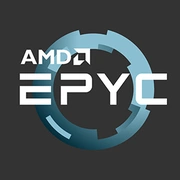AMD EPYC 9335

The AMD EPYC 9335 processor is a powerhouse for server applications, with its impressive 32 cores and 64 threads. The 4nm technology ensures efficient performance while the 256MB L3 cache allows for quick access to frequently used data. The base frequency of 3.0 GHz can handle heavy workloads with ease, and the max turbo frequency of 4.4 GHz provides an extra boost for demanding tasks.
With a TDP of 210W, the EPYC 9335 does require a substantial amount of power, but the performance it delivers is well worth it for server applications where reliability and speed are crucial. The Turin code name signifies its place within the EPYC lineup, known for its high performance and scalability.
Overall, the AMD EPYC 9335 is an excellent choice for server applications that require top-notch processing power. Its high core and thread count, along with impressive clock speeds and cache size, make it a formidable option for demanding workloads. If you're in need of a processor that can handle complex tasks with ease, the EPYC 9335 is definitely worth considering.
Basic
Label Name
AMD
Platform
Server
Launch Date
October 2024
Model Name
?
The Intel processor number is just one of several factors - along with processor brand, system configurations, and system-level benchmarks - to be considered when choosing the right processor for your computing needs.
EPYC 9335
Code Name
Turin
Foundry
TSMC
Generation
EPYC (Zen 5 (Turin))
CPU Specifications
Total Cores
?
Cores is a hardware term that describes the number of independent central processing units in a single computing component (die or chip).
32
Total Threads
?
Where applicable, Intel® Hyper-Threading Technology is only available on Performance-cores.
64
Performance-cores
32
Performance-core Base Frequency
3.0 GHz
Performance-core Max Turbo Frequency
?
Maximum P-core turbo frequency derived from Intel® Turbo Boost Technology.
4.4 GHz
L1 Cache
64 KB per core
L2 Cache
1 MB per core
L3 Cache
256 MB
CPU Socket
?
The socket is the component that provides the mechanical and electrical connections between the processor and motherboard.
AMD Socket SP5
Bus Frequency
100 MHz
Multiplier
30
Unlocked Multiplier
No
Technology
?
Lithography refers to the semiconductor technology used to manufacture an integrated circuit, and is reported in nanometer (nm), indicative of the size of features built on the semiconductor.
4 nm
TDP
210 W
PCIe Version
?
PCI Express is a high-speed serial computer expansion bus standard used for connecting high-speed components, replacing older standards such as AGP, PCI, and PCI-X. It has gone through multiple revisions and improvements since its initial release. PCIe 1.0 was first introduced in 2002, and in order to meet the growing demand for higher bandwidth, subsequent versions have been released over time.
5
Memory Specifications
Memory Type
?
Intel® processors come in four different types: Single Channel, Dual Channel, Triple Channel, and Flex Mode. Maximum supported memory speed may be lower when populating multiple DIMMs per channel on products that support multiple memory channels.
DDR5-6000
Max Memory Size
?
Max memory size refers to the maximum memory capacity supported by the processor.
6 TB
Memory Channels
?
The number of memory channels refers to the bandwidth operation for real world application.
12
Max Memory Bandwidth
?
Max Memory bandwidth is the maximum rate at which data can be read from or stored into a semiconductor memory by the processor (in GB/s).
576 GB/s
ECC Memory Support
Yes
GPU Specifications
Integrated Graphics Model
?
An integrated GPU refers to the graphics core that is integrated into the CPU processor. Leveraging the processor's powerful computational capabilities and intelligent power efficiency management, it delivers outstanding graphics performance and a smooth application experience at a lower power consumption.
N/A
Miscellaneous
PCIe Lanes
160
Share in social media
Or Link To Us
<a href="https://cputronic.com/en/cpu/amd-epyc-9335" target="_blank">AMD EPYC 9335</a>